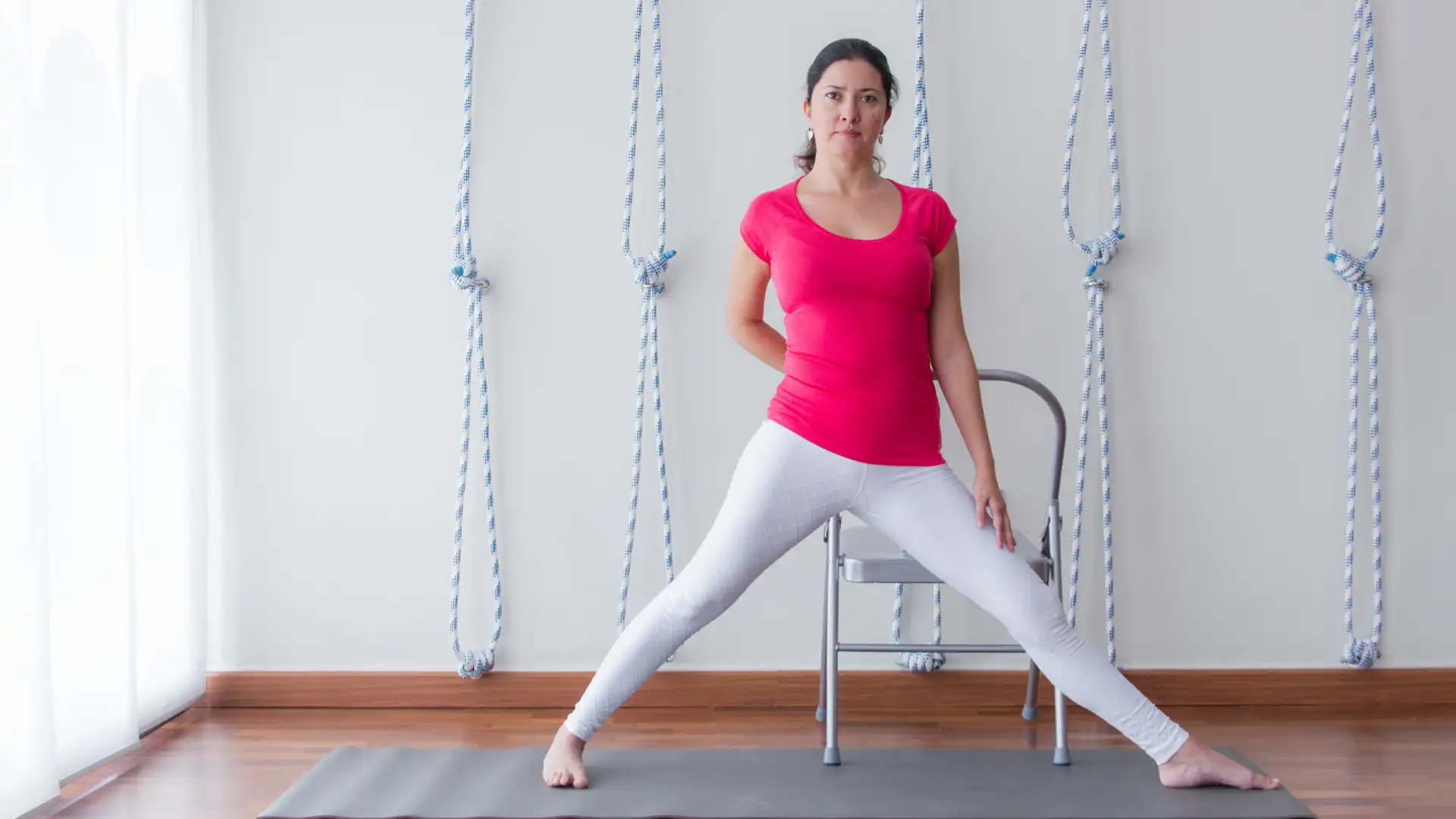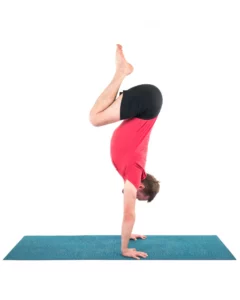Tricky Triangle Pose: Learn to Protect Your SI Joints

Did you know that of the three simplest shapes, circle, square, and Triangle, only the Triangle completely reverses its symbolic meaning when it’s turned upside-down? Rotate a circle 90 degrees, and it still means wholeness, unity, inclusion, and infinity. A square turned on its head looks exactly the same and still means grounding, stability, balance, and dependability. But turn a triangle from the point up to point down, and you’ve moved from male to female, sun to moon, up to down, mountain to cave and active to passive. Tricky.
The yoga triangle, Utthita Trikonasana (Extended Triangle Pose), is tricky too. In most styles of hatha yoga, including Iyengar, it’s introduced to beginners in the first or second class. Yet it’s so complex and so full of actions that Mr. Iyengar’s son Prashant has written an entire book, The Alpha and Omega of Trikonasana, explaining the philosophy and psychology of yoga through Triangle Pose.
Hipbones Facing Forward? Just Don’t
But there’s another layer to the trickiness of Trikonasana. Somewhere in the evolution of yoga in North America, a potent image was set loose: triangle pose is done between panes of glass with the hipbones facing forward. Let the hips rotate, and you risk shattering the imaginary glass—and we all know how disturbing that would be.
True beginners, those lucky souls, have never heard about the pelvis and the panes of glass, so they are free to focus on working their legs. More experienced students often aren’t so fortunate.
Just last week, I saw a capable student, new to the class, who seemed to be stuck partway into the pose. Her front leg was not rotated enough, she had limited action in her hip crease, and her chest wasn’t opening.
When I suggested she let go of her pelvis to let her front leg rotate, she said: “Aren’t I supposed to keep the hips squared to the front of the room?”
In a word, no.
Keeping the pelvis facing forward makes it almost impossible to rotate the front thigh fully. Without that rotation, the knee can’t be aligned with the front foot, which means the knee is in danger. Worse yet, if you work hard to get the front thigh rotating and the pelvis moving away from the front leg, you strain the sacroiliac joint.
In a workshop on yoga and the SI joint that Judith Lasater gave in Vancouver several years ago, her mantra was: “The sacroiliac is a joint of stability, not a joint of mobility.”
We move it best when we move the pelvis as one piece.
Spare the Square
Instead of thinking about making your pelvis square to the room, try this:
- Take a wide stance and bring your feet into position for Triangle Pose. Turn the front leg out 90 degrees and the back leg inward about 30 degrees. Allow the pelvis to rotate along with the back leg.
- Drop your front ribs to take any excess curve out of your lumbar spine. You will feel your abdominal muscles become firm. Strengthen your back leg by firming your quadriceps toward your thigh bone.
- From the root of your front thigh, at your hip, turn your thigh out as much as possible. Allow your pelvis to follow the rotation of your thigh. Continue to rotate your upper thigh until your front knee lines up with your front foot.
- Extend your arms out at shoulder level. Now begin to extend the entire torso outward over your front leg. Keep both sides of the torso long as you extend outward.
- As you move deeper into the pose, lengthen from your tailbone toward the crown of your head.
- Let go of the imaginary planes of glass, and yes, they will shatter. But no need to sweep up the imaginary shards.
- And now your tricky Triangle can start its journey. No longer an external geometrical shape, it can become part of your body’s conscious internal geometry—which is a good trick.
Also, read...
4 Easy Ways to Use a Sandbag in Yoga Practice
Exercise and Longevity: Diversify Your Yoga Practice for Maximum Benefits
Glute Amnesia: Yoga for Your Forgotten Rear
Related courses
Breath as Medicine: Yogic Breathing for Vital Aging
Yoga and Myofascial Release: Releasing Chronic Tension with the Bodymind Ballwork Method

Eve Johnson taught Iyengar Yoga for 18 years before being introduced to Spinefulness in 2016. Convinced by the logic, clarity, and effectiveness of Spinefulness alignment, she took the teacher training course and was certified in July 2018. Eve teaches Spineful Yoga over Zoom and offers an online Spinefulness Foundations course. For course information, go to http://spinefulness.ca.



